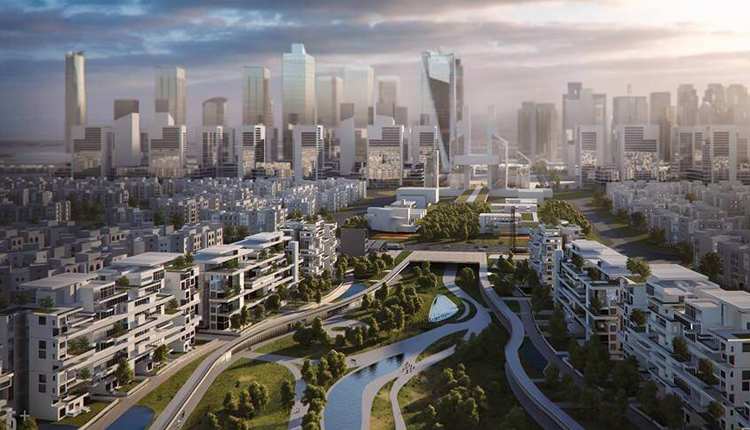Dar Al-Handasah to pour concrete for 10 towers in Egypt new capital in June
Gulf-based Dar Al-Handasah Consultants Co. (Shair and Partners) says it will complete pouring the concrete for 10 towers at the Central Business District (CBD) in Egypt’s new capital within June 2020.
CBD includes 20 housing, administrative, and hotel towers on a space of around 1,200 square metres, the company’s senior structural engineer Sherif Nossair told Amwal Al Ghad on Thursday.
The buildings encompass an iconic tower that is being implemented by China State Construction Engineering Corporation (CSCEC) in the new capital. It will be the tallest building in Africa.
The 358-metre tall tower is set to be one of several Dubai-style mega projects in the new capital on a space of 240,000 square metres.
Established in 1956, Dar Al-Handasah is one of the world’s leading international consultancies with five design centres in Beirut, Cairo, London, Pune, and Amman in addition to 45 regional operation offices in 30 countries.
Dar al-Handasah’s works in Egypt New Capital
Dar al-Handasah supervised the design, planning, and construction of other giant national projects in Egypt, including multi-level involvement in the anticipated new capital.
Dar has been responsible for the supervision of construction for various project components in the new capital such as the Central Business District and the New Governmental District, which consists of Cabinet and Parliament buildings along with 34 ministerial buildings.
The most prominent among those is a 385 million high skyscraper, to be identified as the tallest tower in Africa.
In March 2018, Egyptian Prime Minister Moustafa Madbouly laid the foundation stone of a massive Central Business District (CBD) in the new capital’s first phase.
The new district, which is also being carried out by CSCEC, will include 20 giant buildings and will be completed at the end of 2020, with investment cost of $3.2 billion.
Located 45 km (28 miles) east of Cairo, the anticipated new capital is part of the Egyptian government’s plan to expand urban areas to deal with the state’s rapid population growth and improve the nation’s infrastructure.
The new city is set to be a 270-square-mile hub with 21 residential districts to accommodate five million people. It will feature 1,250 mosques and churches as well as 5,000-seat conference centre, nearly 2,000 schools and colleges, over 600 medical facilities, and a park that is projected to be the world’s largest.


